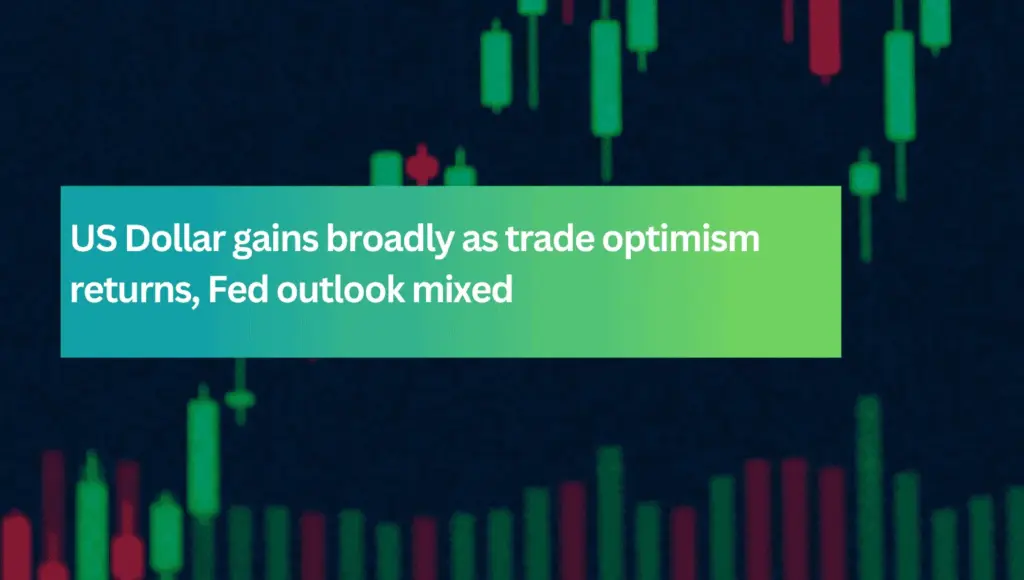Dollar boosted by trade optimism and rising yields

The U.S. dollar strengthened notably on Monday, supported by improved market sentiment following President Donald Trump's indication of willingness to engage in trade negotiations with the European Union and other major trading partners ahead of the scheduled tariff increases on August 1. Trump's conciliatory stance provided relief to global markets, while his announcement of additional military aid for Ukraine and a warning of sanctions against countries buying Russian exports without a peace agreement introduced fresh geopolitical complexity. Furthermore, Trump’s anticipated unveiling of a substantial $70 billion investment package focusing on artificial intelligence and energy initiatives further buoyed market sentiment, underpinning dollar strength.
Treasury yields rose modestly, with investors positioning ahead of crucial U.S. inflation data due on Tuesday and major bank earnings reports expected later this week. The yield curve steepened slightly, as the closely watched 2s-10s yield spread widened marginally to around +52.2 basis points, reflecting investor caution amid shifting expectations around the Federal Reserve’s policy trajectory.
Mixed Fed commentary clouds rate outlook
Federal Reserve officials provided diverging signals, complicating investor expectations. Cleveland Fed President Beth Hammack maintained an optimistic tone, asserting inflation remains elevated and implying there was no immediate rationale for rate cuts. In contrast, Fed Chair Jerome Powell faced scrutiny as he called for an internal review into cost overruns associated with Fed headquarters renovations, responding to mounting criticism from Trump administration officials. Amid these developments, White House economic adviser Kevin Hassett emerged as a leading contender to become the next Fed chief, fueling speculation regarding possible future shifts in central bank leadership and policy.
Euro pressured amid EU-US trade tensions
EUR/USD declined, slipping below the crucial 21-day moving average at 1.1660, pressured by intensifying trade tensions and uncertainties surrounding U.S. tariff policies. European Union officials openly criticized the U.S. for perceived delays in advancing trade negotiations, warning of potential countermeasures if a comprehensive agreement is not swiftly reached. Technical signals indicate the possibility of further euro losses, with key downside targets at the significant April high around 1.1573, followed by the psychologically important 1.15 level.
Sterling declines sharply on dovish BoE comments
GBP/USD fell notably, pressured by growing expectations of imminent rate cuts from the Bank of England. Governor Andrew Bailey’s notably dovish comments on persistent UK labor market weakness and subdued economic growth exacerbated sterling selling pressure. Technically, cable decisively breached its critical 55-day moving average, moving towards key support around the 2024 high at 1.3434, as risk reversals turned notably bearish. The next pivotal support lies at the June low near 1.3373. Meanwhile, EUR/GBP rose toward its year-to-date peak of 0.8740, reflecting narrowing EU-UK yield differentials ahead of crucial UK inflation data on Wednesday.
USD/JPY hits three-week highs on rising yields, election positioning
USD/JPY surged to fresh three-week highs, driven by rising U.S. Treasury yields, widespread dollar strength, and active option-related buying as investors positioned ahead of Japan's upcoming Upper House elections this weekend. The currency pair is now strategically poised to challenge important resistance levels, notably the June high at 148.02 and the significant technical zone around 148.65, if current bullish momentum continues.
Commodity currencies weaker, AUD pressured ahead of China data
AUD/USD retreated modestly, pressured by declining metals prices and cautious positioning before China’s closely-watched GDP data release on Tuesday. Traders remain wary amid uncertainties regarding Chinese economic recovery, which could directly impact Australia's resource-dependent economy.
Equities cautiously optimistic; commodities mixed amid geopolitical concerns
Global equity markets remained cautiously optimistic, with the S&P 500 advancing moderately by 0.20%, primarily driven by gains in consumer services and financial sector stocks. Conversely, commodity markets exhibited mixed trends: oil prices dropped significantly by 2%, weighed down by investor anxieties related to Trump’s renewed threats of sanctions targeting purchasers of Russian energy exports. Gold prices ended largely unchanged, relinquishing initial gains as dollar strength dominated sentiment. Copper prices declined modestly by 0.91%, reflecting both a stronger dollar and persistent trade-related uncertainties affecting global demand prospects.
